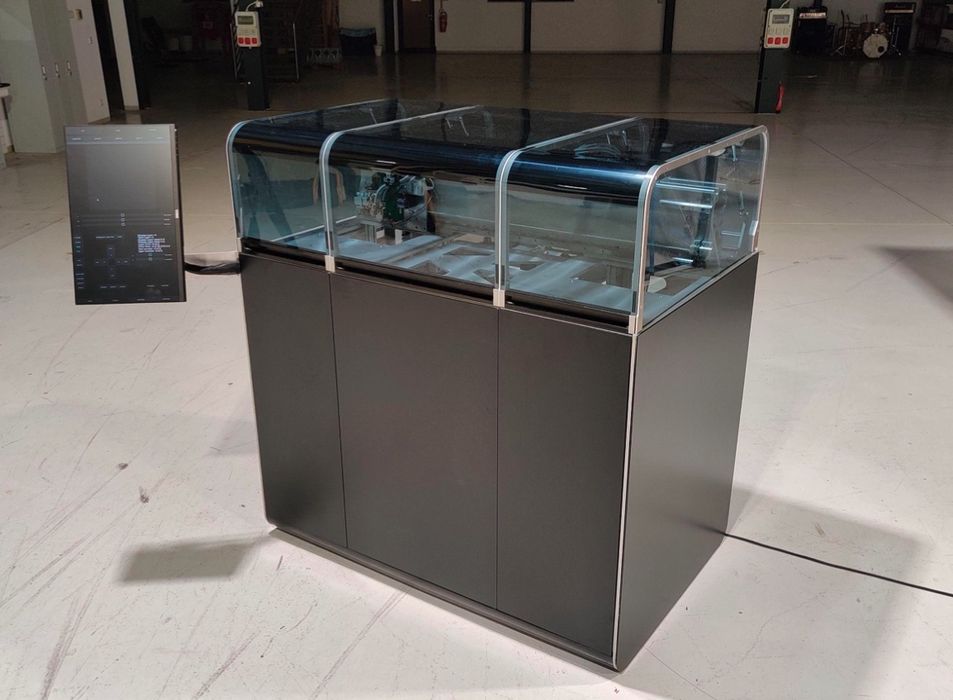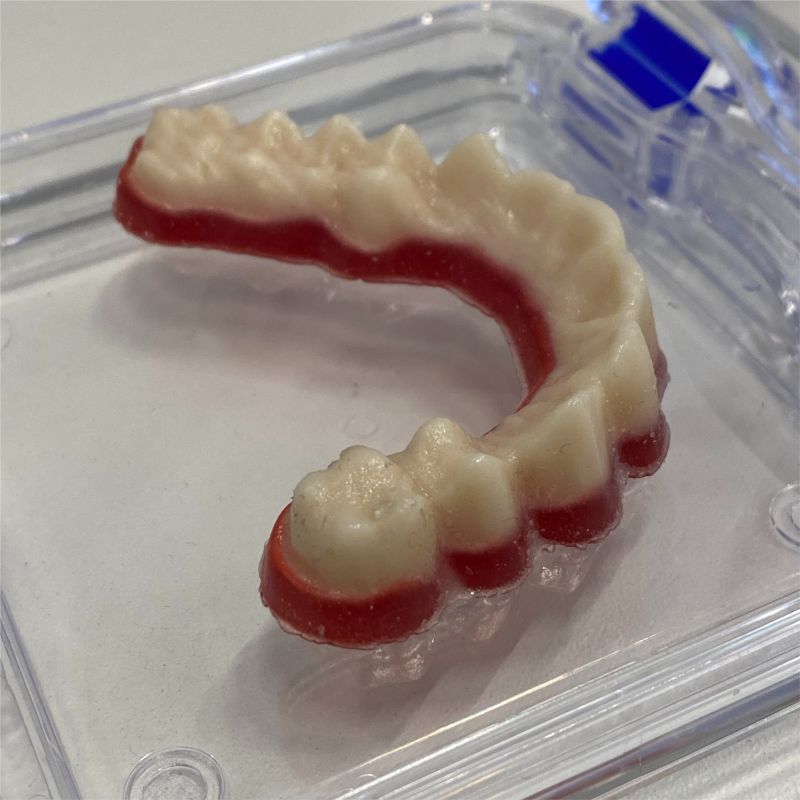Quantica, a Berlin-based 3D printing technology developer, has announced the launch of its debut 3D printer at Formnext 2021.
The T1 Pro is an industrial-grade material jetting system based on the company’s Extreme Viscosity Jetting process. In essence, the system is designed specifically for high-performance multi-material prints using combinations of ultra-high viscosity resins – a niche that inkjet-based 3D printing has not yet addressed. Quantica’s 3D printer is already available for select research institutions and manufacturing firms.
The list of potential applications stretches from photorealistic 3D models and multi-material dental parts to printed electronics components and optical parts.
Additionally, Quantica has also recently appointed Ramon Borrell, the former CTO of Xaar, as its new CTO.
“Having been working as an inkjet technology strategy consultant for Quantica for six months, I became increasingly convinced of the enormous transformative potential of their technology,” said Borrell. “Despite competing with other extremely interesting proposals from much larger and resourceful companies, Quantica’s case won due to the attractive technical and business challenges, the dynamism and entrepreneurial culture of the company, and the possibility to belong to the next major growth adventure in inkjet.”

The next step for inkjet 3D printing
The multi-material inkjet 3D printing space is currently dominated by Stratasys’ PolyJet range and 3D Systems’ MultiJet printers, but these technologies are still largely based on conventional 2D inkjet printheads. As such, they rely on relatively low-viscosity resins as printing materials, since thicker feedstocks simply aren’t as easy to jet at high speeds. This unfortunate fact has historically limited inkjet-based 3D printing’s applications to aesthetic display pieces rather than functional end-use parts.
Quantica’s inkjet process, on the other hand, claims to bring about a “complete paradigm shift in terms of working principles”. Developed over the course of four years, the technology is capable of depositing liquids up to 15x more viscous than existing multi-material jetting systems, enabling the fabrication of higher-strength parts. This includes functional resins originally intended for SLA-based processes like DLP and LCD 3D printing.
The T1 Pro 3D printer
The firm’s proprietary printhead is equipped with an array of 24 nozzles, and each T1 Pro 3D printer is able to house between two and six printheads at a time, paving the way for multi-colored, multi-strength, and multi-functional components.
Quantica states that it’s already proven the capabilities of its 3D printer via a joint development agreement with an unnamed dental company. Using combinations of up to six Class II medical device materials, the partners leveraged the T1 Pro to 3D print permanent end-use dental parts.
Beyond just the dental market, the company also intends to explore various other sectors where Extreme Viscosity Jetting could be of use. This includes micro-fluidics, biomedical, optics, printed electronics, flat panel displays, adhesives, and coatings.
“Inkjet has long been adopted for traditional industrial printing of 2D applications. Our ambition is also to deploy the technology in high volume applications, where it adds meaningful value,” adds Claus Moseholm, CEO of Quantica. “To be a platform for many players to produce meaningfully, we want the right partners to be involved in developing the toolbox, and we are looking for more industrial partners to explore this.”

Quantica certainly wasn’t the only OEM taking advantage of Formnext 2021. Arburg’s InnovatiQ subsidiary, a specialist in silicone 3D printing, took the opportunity to announce its latest silicone 3D printer at the trade show – the new LIQ 7. Based on the firm’s Liquid Additive Manufacturing (LAM) technology, the LIQ 7 will reportedly enable full-color 3D printed silicone parts for the first time.
Subscribe to the 3D Printing Industry newsletter for the latest news in additive manufacturing. You can also stay connected by following us on Twitter, liking us on Facebook, and tuning into the 3D Printing Industry YouTube Channel.
Looking for a career in additive manufacturing? Visit 3D Printing Jobs for a selection of roles in the industry.
Featured image shows the T1 Pro 3D printer. Photo via Quantica.



